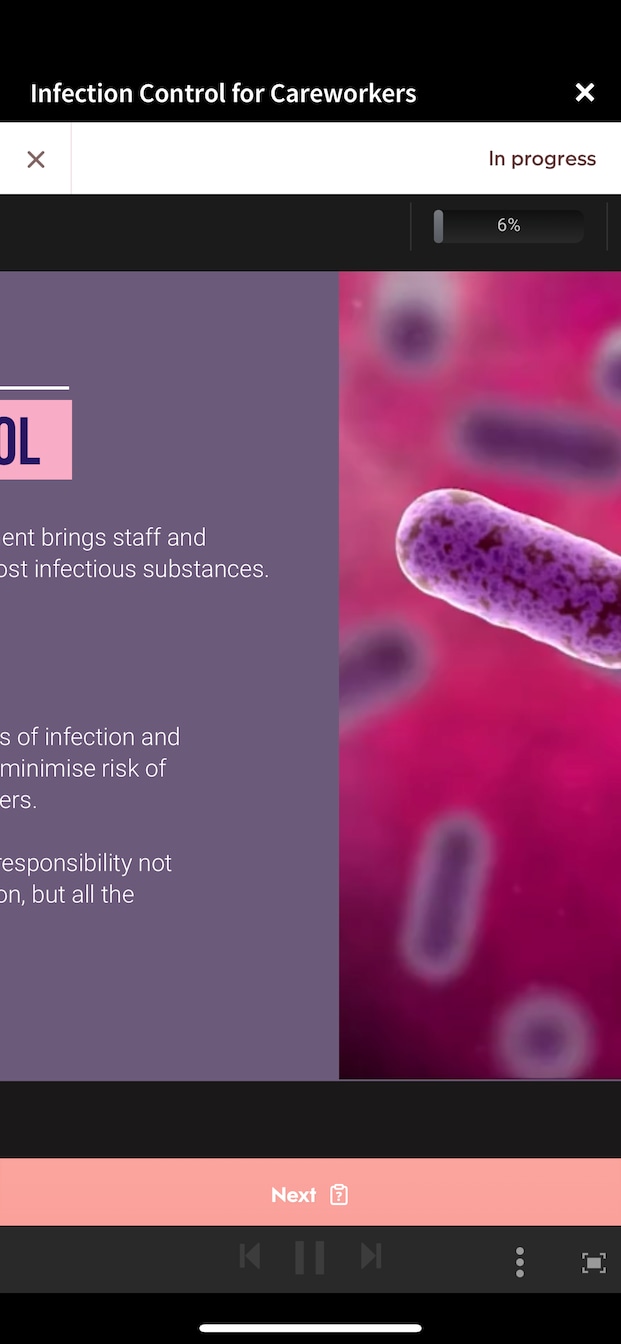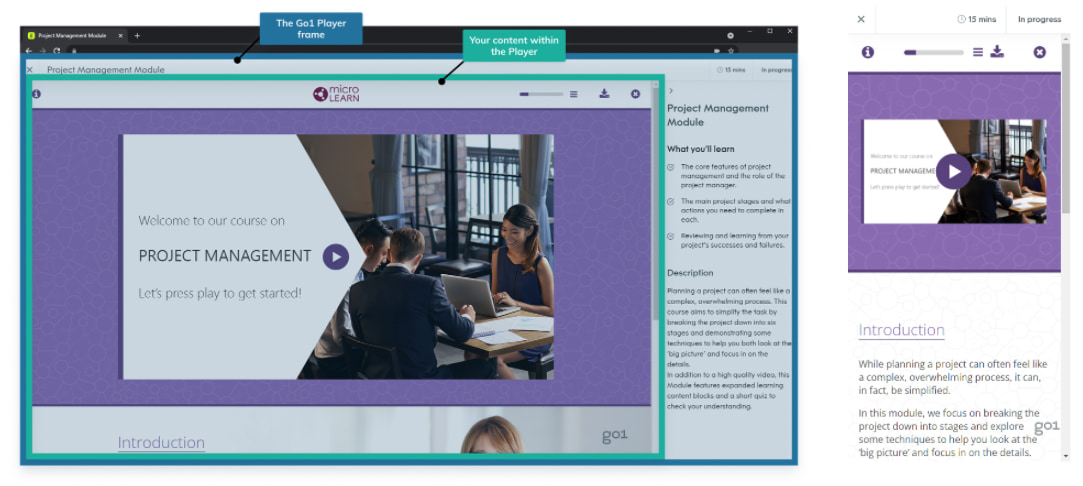It is a requirement for your content to play embedded within the Go1 Player at all times. This means that your content must not launch popups or load in a new window or tab.
There are three primary reasons for this requirement:
- A consistent user experience - Keeping the content in a single window within the Go1 Player is essential for creating a clear and consistent learning experience for our users.
- Browser compatibility - The Go1 Player is compatible with all popular desktop and mobile browsers, operating systems and native mobile apps from our customers. To be able to support this variety of consumption, we require all content can launch and be contained within our player frame. If your content cannot do this, it risks preventing users from being able to consume it.
- Mobile device compatibility - Content that requires popups, new windows or tabs are not acceptable, as these playback functions will not work in our supported mobile environments, such as native iOS/Andriod apps.
Things to check & correct to ensure your content plays in the Go1 Player
There may be several reasons your content is not running solely within the Go1 Player. Here are a few key methods you can check and correct to ensure you meet this requirement.
1. Ensure you do not store or use cookies within your content
Most websites rely on cookies to do tasks, such as handle user authentication, track user behaviour, apply user preferences and many other reasons. This functionality in itself is not an issue - however, with changes to how browsers handle cookies with increased security restrictions on their use, cookies from addresses other than those from Go1 result in content failing when played in an iframe of another party.
Online learning content can contain embedded pages within the content, which may also utilise cookies depending on how it was created. The cookies in this situation are referred to as ‘3rd-party cookies' and are blocked in Safari by default, Chrome and Edge will also block them by the end of 2022.
The easiest way to test for cookies in your content is to launch your content inside an iframe that has a top URL that is different to the URLs used in the cookies. The content will fail when embedded in a page that is launched in a browser with increased cookie restrictions. If you are using the Google Chrome browser, you can also inspect cookies being used via the developer tools - see View, edit, and delete cookies - Chrome Developers.
2. Ensure your content does not trigger pop-ups
‘Pop-Ups’ are browser windows or tabs that are created automatically by the content the user is consuming.
There are several places within content that can force the browser to create a new window/tab. However, this is an unwanted behaviour from our users as well as browsers starting to block the request by default as seen in the screenshot below.

Pop-ups are a legacy behaviour for online learning content standards, and in the case of native mobile apps, multiple windows/tabs are not supported at all and will result in the content not working.
To check if your content contains pop-ups, load your content in Go1 following our content authoring guide, and launch the content. If the content plays entirely within the Go1 Player you will pass this requirement.
3. Ensure your content is designed for responsive display
Many types of content can be published with static minimum resolution screen sizes. This is a concern as these hard values ignore the dimensions available to both the content itself and the screen it's presented on.
Having these restrictions on content prevents the Go1 Player from choosing the best display options for the content, resulting in behaviour seen in the screenshot below, where the user is playing content on a mobile device, and the content is being cropped at the edges. To resolve these issues, you will need to ensure your content is created for responsive design.

To check if your content is responsive, you can open the content using a browser on your mobile device. If the content resizes and fits neatly within your mobile screen - and you can easily consume and complete the content on mobile without visibly issues, your content should pass the test for responsive design.
Example of an integrated interface that meets this requirement
The below is an example of content that meets this requirement by playing neatly within the Go1 Player and is responsive based on the screen size.
